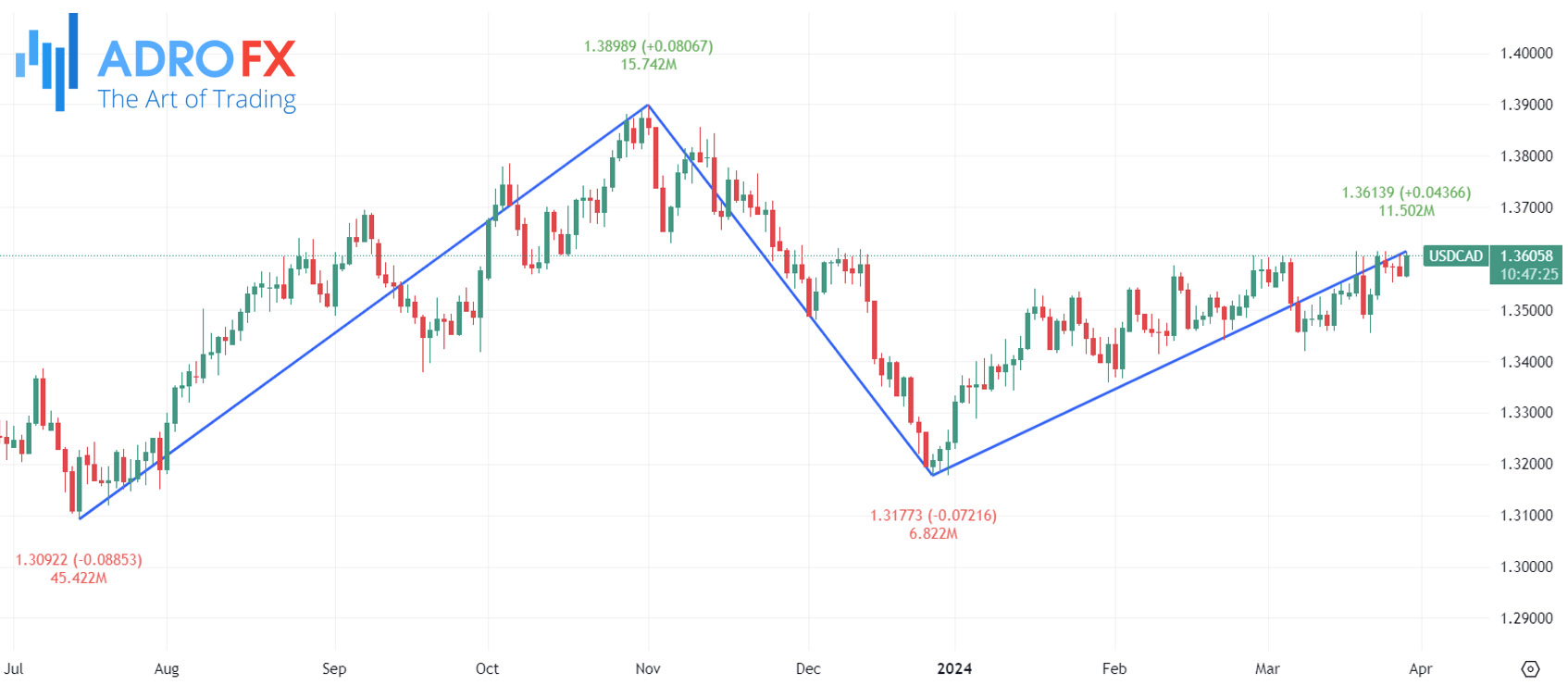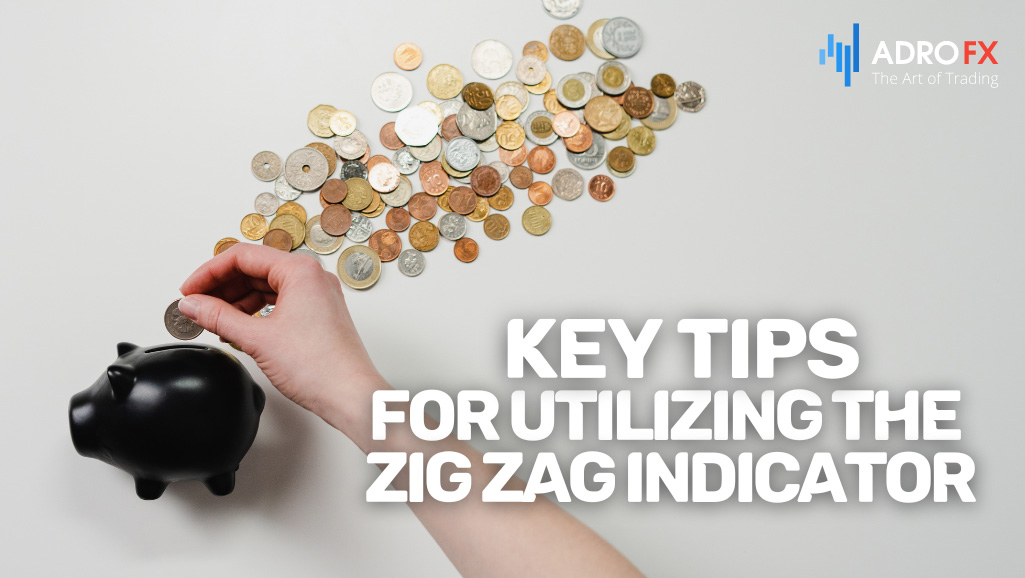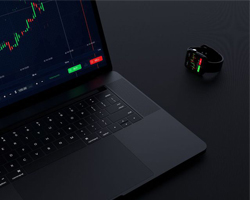Precision Trading with the Zig Zag Indicator: Insights and Best Practices

Technical analysis serves as a pivotal element in traders' decision-making processes within financial markets, with the Zig Zag indicator emerging as a commonly employed tool for this purpose. This piece aims to delve into the Zig Zag indicator, elucidating its functionality, operational mechanisms, and pragmatic integration into trading strategies.
Functioning as a ubiquitous technical analysis instrument, the Zig Zag indicator finds extensive application among traders seeking to discern trends and potential reversals across diverse financial markets, spanning stocks and forex. Its fundamental objective lies in sieving out inconsequential price oscillations, spotlighting notable price fluctuations to enable traders to concentrate on pivotal price swings.
Manifesting through charted lines that link significant peaks and troughs in price movements, the Zig Zag indicator facilitates a clearer visualization of trends by mitigating noise inherent in price data. This clarity empowers traders to corroborate trend trajectories, pinpoint support and resistance thresholds, and identify opportune entry and exit junctures for trades.
Nevertheless, it's imperative to acknowledge the limitations accompanying the Zig Zag indicator, including its proclivity to lag behind actual price movements and susceptibility to generating false signals. Consequently, traders frequently amalgamate it with alternative technical indicators and analytical tools to foster more astute trading decisions.
In the ensuing discourse, we will dissect effective methodologies for interpreting the Zig Zag indicator, its seamless integration into trading frameworks, nuanced comprehension of its constraints, and furnish invaluable insights for its pragmatic utilization. Through a comprehensive grasp of the Zig Zag indicator and its versatile utility, traders can fortify their analytical prowess and traverse the financial landscape with unwavering assurance.
Zig Zag Indicator Explained
The Zig Zag indicator stands as a pivotal technical analysis tool employed by traders to discern trends and potential reversals within financial markets, particularly in the stock and forex trading realms. Its core objective revolves around sifting through minor price fluctuations and accentuating significant price shifts, thereby aiding traders in concentrating on pertinent price swings.
This indicator achieves its purpose by charting lines on a price movement chart that link noteworthy peaks and troughs. Through this process, it excludes price movements beneath a predefined threshold, referred to as the "reversal" parameter, and only delineates lines when price alterations surpass a specified percentage or amount.

By tethering major price swings, the Zig Zag indicator facilitates a clearer visualization of trends by attenuating the noise inherent in price data. This clarity empowers traders to affirm trend trajectories, pinpoint support and resistance thresholds, and identify potential entry and exit points for trades.
However, it's crucial to acknowledge that the Zig Zag indicator may exhibit lagging tendencies vis-a-vis actual price movements, owing to its reliance on historical data to identify highs and lows. Consequently, traders often integrate it with alternative technical indicators and analytical tools to foster more well-informed trading decisions.
Mastering the art of interpreting the Zig Zag indicator involves grasping its essential components and deciphering the signals it generates. Key aspects of effectively reading this indicator include identifying significant price swings, discerning trend directions, recognizing potential reversal points, adjusting parameters to suit trading preferences, filtering out market noise, and amalgamating it with other indicators for enhanced signal accuracy.
Moreover, traders must remain cognizant of the repainting phenomenon associated with the Zig Zag indicator, wherein past values are adjusted based on subsequent price movements, potentially distorting historical signals. Consequently, exercising prudence and focusing on current price action are imperative for discerning reliable signals.
By internalizing these principles, traders can harness the power of the Zig Zag indicator to identify trends, pinpoint potential reversals, and execute well-informed trading decisions within the dynamic landscape of financial markets.

Utilizing the Zig Zag Indicator in Your Trading Approach
Integrating the Zig Zag indicator into your trading methodology can furnish valuable insights into prevailing market trends and plausible entry and exit positions. Below are effective ways to leverage the Zig Zag indicator adeptly in your trading endeavors:
Identifying Trends
Utilize the Zig Zag indicator to ascertain trend directions by linking major highs and lows on a chart. An upward trajectory of the Zig Zag line suggests an uptrend, while a downward trajectory signifies a downtrend. This information enables traders to align their trades with the prevailing trend.
Spotting Reversals
Leverage the Zig Zag indicator to pinpoint potential trend reversals by detecting changes in direction. A shift in the Zig Zag line's trajectory indicates the formation of a new high or low, hinting at a possible reversal in the ongoing trend. Before entering reversal trades, traders should seek confirmation from additional indicators or price action.
Setting Stop Loss and Take Profit Levels
Utilize the Zig Zag indicator to establish Stop Loss and Take Profit levels based on significant price fluctuations. During an uptrend, position a Stop Loss marginally below the recent swing low identified by the Zig Zag indicator. Conversely, in a downtrend, position a Stop Loss above the recent swing high.
Confirming Support and Resistance Levels
Leverage the Zig Zag indicator to recognize support and resistance levels by linking significant highs and lows. These levels offer insights into potential entry and exit junctures for trades. For instance, if the price approaches a previous swing high during an uptrend, anticipate resistance and contemplate profit-taking or exiting long positions.
Combining with Other Indicators
Combine the Zig Zag indicator with alternative technical indicators to corroborate signals and filter out erroneous signals. For instance, juxtapose the Zig Zag indicator with moving averages, trendlines, or momentum oscillators to validate trading signals and heighten the likelihood of successful trades.
Filtering Out Noise
The Zig Zag indicator sieves out minor price oscillations, accentuating significant price movements. This facilitates traders in evading market noise and focusing on pertinent price action, thereby enabling them to make well-founded trading decisions grounded on clearer trend signals.
While the Zig Zag indicator can augment your trading arsenal, it's imperative to complement it with diverse forms of analysis and adhere to robust risk management practices to optimize your trading strategy's efficacy. Moreover, subjecting your strategy to backtesting on historical data facilitates the evaluation of its performance and enables refinement over time.

Drawbacks of the Zig Zag Indicator
While the Zig Zag indicator serves as a handy tool in technical analysis, it presents several limitations that traders should take into account:
- Lagging Nature
As the Zig Zag indicator relies on historical price data, it often lags behind actual price movements. This delay can result in missed trading opportunities or entering trades belatedly.
- Repainting
A significant drawback of the Zig Zag indicator is its tendency to repaint historical data. Repainting transpires when the indicator readjusts past values based on subsequent price movements, complicating the reliance on historical signals for analysis.
- Sensitivity to Parameters
The efficacy of the Zig Zag indicator hinges heavily on parameters chosen by the trader, such as the percentage or amount of price change necessary to establish a new swing high or low. Altering these parameters can markedly affect the indicator's performance and the signals it generates.
- False Signals
Like numerous technical indicators, the Zig Zag indicator is susceptible to producing false signals, particularly during periods of low volatility or erratic price action. Traders might encounter whipsaws, where conflicting signals lead to losses or missed opportunities.
- Not Suited for All Market Conditions
The Zig Zag indicator may not perform optimally in all market conditions, especially in ranging or sideways markets characterized by choppy price movements and indistinct trends. Under such circumstances, the indicator might generate numerous false signals, diminishing its reliability for trading decisions.
- Subjectivity
The interpretation of the Zig Zag indicator's signals can be subjective, as traders may employ different criteria for identifying significant price swings or determining trend direction. This subjectivity can yield disparities in trading decisions and outcomes.
- Limited to Price Data
The Zig Zag indicator relies solely on price data and does not encompass volume or other market variables. Consequently, it might not offer a comprehensive perspective on market dynamics or encompass all pertinent factors influencing price movements.
Despite these constraints, the Zig Zag indicator can still furnish value when used alongside other technical indicators and analysis methodologies. Traders should remain cognizant of its limitations and integrate proper risk management techniques to alleviate potential drawbacks in their trading strategies.

Key Tips for Utilizing the Zig Zag Indicator
Having grasped the fundamentals of the Zig Zag indicator, let's delve into some practical strategies for its effective application in trading:
- Understand Its Purpose
Recognize that the Zig Zag indicator aims to filter out minor price movements and emphasize significant changes, aiding in trend identification and potential reversals. - Adjust Parameters Wisely
Customize the sensitivity of the Zig Zag indicator by tweaking parameters like the percentage or amount of price change needed to establish a new swing high or low. Strike a balance between sensitivity and reliability to align with your trading preferences. - Confirm Signals
While the Zig Zag indicator offers valuable insights, always corroborate its signals with other technical indicators or price action analysis to mitigate the risk of false signals. - Incorporate into a Comprehensive Strategy
Integrate the Zig Zag indicator into a broader trading strategy, combining it with other indicators and analysis methods to bolster signal accuracy and effectiveness. - Manage Risk
Implement sound risk management techniques when employing the Zig Zag indicator in trading. Set Stop Loss and Take Profit levels based on significant price swings to safeguard your capital and optimize profits. - Stay Mindful of Limitations
Acknowledge the limitations of the Zig Zag indicator, including its tendency to lag, sensitivity to parameters, and susceptibility to false signals. Adapt your strategy accordingly and maintain vigilance in your analysis. - Backtest and Practice
Before deploying the Zig Zag indicator in live trading, conduct thorough backtesting of your strategy on historical data and practice in a demo account. This process allows you to evaluate its performance and refine your approach.
Conclusion
In summary, it's imperative to acknowledge that while the Zig Zag indicator doesn't possess the ability to foresee future price movements with absolute certainty, it remains a valuable asset in the trader's toolkit. Rather than serving as a crystal ball, it functions as a tool for spotlighting significant trends rooted in historical data. By integrating the Zig Zag indicator into your trading analysis, you can delve deeper into the broader price dynamics of a market or asset.
Although skeptics may question the Zig Zag indicator's utility, this article underscores its resilience in navigating through conflicting price signals and market volatility. Like any tool, its effectiveness hinges on the specific context of its application. Seasoned traders recognize its merits and harness its potential alongside other analytical methods to obtain a holistic view of the market landscape.
Just as one wouldn't use a golf cart for rugged off-road adventures or a bulldozer for lawn maintenance, the Zig Zag indicator excels when judiciously applied in suitable circumstances. If you're keen to integrate the Zig Zag indicator into your trading strategy and explore its capabilities further, we extend an invitation to join us at AdroFx. Here, you can translate theory into practice and elevate your trading journey to new heights.
About AdroFx
Established in 2018, AdroFx is known for its high technology and its ability to deliver high-quality brokerage services in more than 200 countries around the world. AdroFx makes every effort to keep its customers satisfied and to meet all the trading needs of any trader. With the five types of trading accounts, we have all it takes to fit any traders` needs and styles. The company provides access to 115+ trading instruments, including currencies, metals, stocks, and cryptocurrencies, which make it possible to make the most out of trading on the financial markets. Considering all the above, AdroFx is the perfect variant for anyone who doesn't settle for less than the best.










